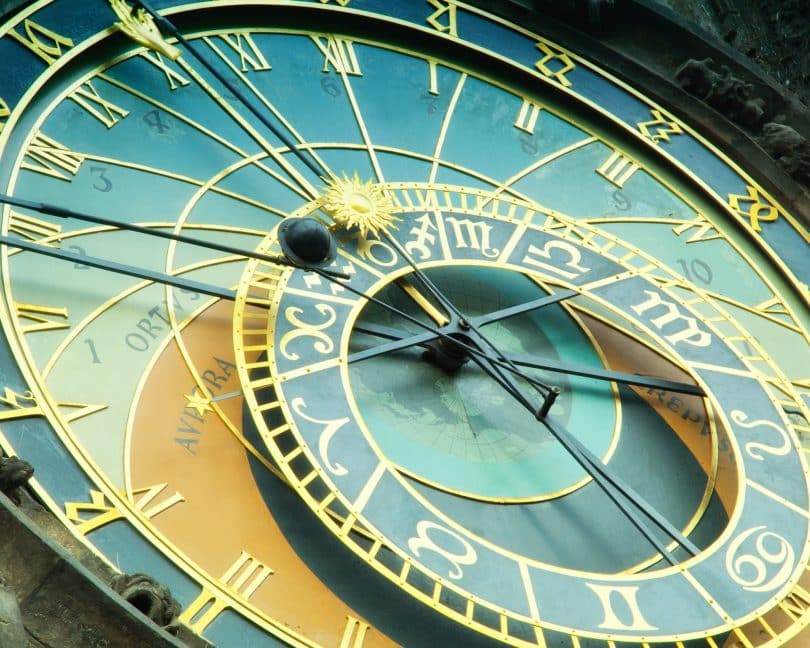One of the most challenging transitions when you are learning astrology is growing beyond sun signs.
Sun signs are simple and fun. When you meet someone, all you need to know is their birthday, and you can appreciate the ways they chat like a Gemini or are quiet and deep like a Scorpio.
There is, however, more to astrology than sun signs.
The signs are like the alphabet of astrology, and learning how to put them together with planets, houses, and aspects when reading a birth chart is like growing from knowing your ABCs to being able to read a novel.
Fortunately, there are books that start from the beginning and teach you the skills you need to read a birth chart for yourself.
The Inner Sky by Steven Forrest is my favorite book for beginners. It was originally published in 1984, but it is a classic that has aged well. The language is simple but beautiful, and Steven uses lots of stories to illustrate his points.
Astrology as a Road Map to Happiness
The book begins by exploring Steven Forrest’s philosophy as an astrologer. Instead of using astrology as a tool to describe the personality or predict the future, Forrest sees it as a road map to happiness. Astrology is meant to help you understand how to make decisions that will lead to the most fulfilling life for you as an individual.
Forrest doesn’t assume that people naturally identify with their signs. Instead, he teaches that the signs describe virtues we are being challenged to live up to. The signs are ways of being in the world that will feel most natural when people have the courage to express them.
Instead of saying that Aquarius is weird and tends to rebel against cultural norms, for example, Forrest presents having an Aquarius planet as a challenge.
“Aquarius and conformity: they mix just about as well as peace and nuclear warheads,” he says. “To conquer the tribal instinct, the Water-Bearer must cultivate an absolute loyalty to truth. She must say what she sees regardless of the consequences.”
After presenting his unique point of view on astrology, Forrest describes how to read the symbols in a birth chart. He doesn’t assume that you know anything about birth charts (except for how to get one, which you can learn how to do on astro-charts.com), and he gently gives you a tour of the territory.
Forrest believes its important for astrologers to remember that astrology is a map of the sky, and his description of the birth chart frequently returns to the physical world, helping you use your birth chart to orient yourself, not only in the inner sky world of astrological metaphors, but also astronomically as a stargazer.

How to Read a Birth Chart
After he’s introduced you to your birth chart, Steven begins to explore how to interpret its symbols.
When reading a birth chart, there are three symbols you need to synthesize: planets, signs, and houses. These symbols are like coordinates in a physical map. They describe the shape of your soul, which creates the story of your life.
The planets are ways of talking about parts of your psyche. Each person has, for example, the drive to form relationships, the drive to communicate, and the drive to set limits and boundaries. These drives are assigned to the planets from Mercury to Pluto, as well as the sun and moon.
The idea of dividing the selfhood into parts and talking about it in pieces can feel unnatural or difficult to understand. This is where Steven’s poetic instincts are an asset.
Instead of treating his exploration of the planets like an anatomy lesson, he treats the planets like characters, stepping into their needs and feelings like an actor, and helps you to identify with them for yourself.
Everyone has the same basic needs and drives represented by the planets, but we all prefer to get those needs met in different ways. These differences are described by the signs. Each of the signs describes a virtue we are trying to learn how to express through the parts of ourselves represented by the planets.
Aries, for example, represents the desire to learn courage. If a person has Venus (the drive to form relationships) in Aries, that person is learning how to be courageous in their relationships.
They might need to have the courage to be friends with people who have different beliefs than them, or they might need to have the courage to assert themselves when someone crosses their boundaries.
The last symbols are houses. Houses describe the classrooms for the lessons of the signs. If the person with Venus in Aries has that planet in the House of Home, they are going to have the most opportunities to learn how to be brave at home.
If they have Venus in the House of Long Journeys Over Water, their need to learn courage in relationships will drive them to seek opportunities to be brave in the company of strangers.
The sections on planets, signs, and houses make up most of the book. I believe these sections are also the most valuable. These sections are so well organized, it’s possible to follow your curiosity and treat the book like an encyclopedia, reading about each of the planets, signs, and houses in your chart in any order you’d like.
Putting it All Together
Once Forrest has given you all the pieces necessary to interpret a birth chart, he walks you through how to synthesize the information into a complete picture of the map of your soul using the example of a celebrity chart.
It is as if he is allowing you to look over his shoulder while he does a consultation for a client. This is a valuable opportunity to learn a technical skill, but he also teaches by example the honesty and compassion required to be a good astrologer.
Ultimately, that is the gift of Steven Forrest’s astrology: It is a brutally honest warning about the potential pitfalls of the human journey blended with compassion for the inevitability of mistakes.







